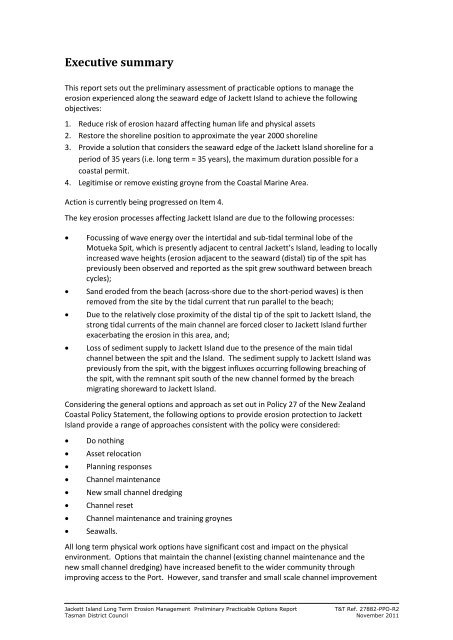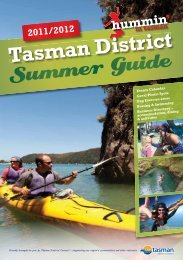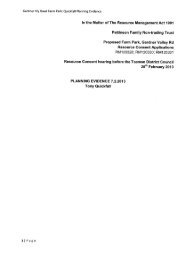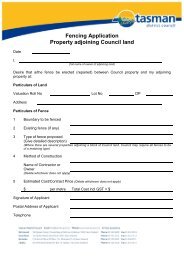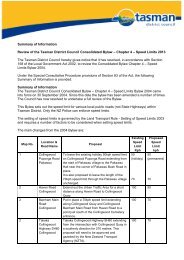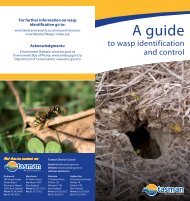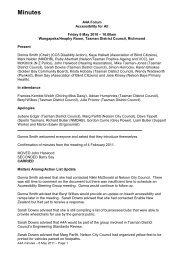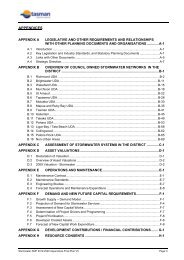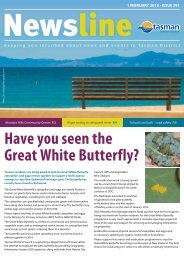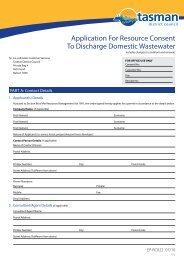RESC11-12-02 Port Motueka Groyne-Jackett Island Erosion ...
RESC11-12-02 Port Motueka Groyne-Jackett Island Erosion ...
RESC11-12-02 Port Motueka Groyne-Jackett Island Erosion ...
Create successful ePaper yourself
Turn your PDF publications into a flip-book with our unique Google optimized e-Paper software.
Executive summary<br />
This report sets out the preliminary assessment of practicable options to manage the<br />
erosion experienced along the seaward edge of <strong>Jackett</strong> <strong>Island</strong> to achieve the following<br />
objectives:<br />
1. Reduce risk of erosion hazard affecting human life and physical assets<br />
2. Restore the shoreline position to approximate the year 2000 shoreline<br />
3. Provide a solution that considers the seaward edge of the <strong>Jackett</strong> <strong>Island</strong> shoreline for a<br />
period of 35 years (i.e. long term = 35 years), the maximum duration possible for a<br />
coastal permit.<br />
4. Legitimise or remove existing groyne from the Coastal Marine Area.<br />
Action is currently being progressed on Item 4.<br />
The key erosion processes affecting <strong>Jackett</strong> <strong>Island</strong> are due to the following processes:<br />
<br />
<br />
<br />
<br />
Focussing of wave energy over the intertidal and sub-tidal terminal lobe of the<br />
<strong>Motueka</strong> Spit, which is presently adjacent to central <strong>Jackett</strong>’s <strong>Island</strong>, leading to locally<br />
increased wave heights (erosion adjacent to the seaward (distal) tip of the spit has<br />
previously been observed and reported as the spit grew southward between breach<br />
cycles);<br />
Sand eroded from the beach (across-shore due to the short-period waves) is then<br />
removed from the site by the tidal current that run parallel to the beach;<br />
Due to the relatively close proximity of the distal tip of the spit to <strong>Jackett</strong> <strong>Island</strong>, the<br />
strong tidal currents of the main channel are forced closer to <strong>Jackett</strong> <strong>Island</strong> further<br />
exacerbating the erosion in this area, and;<br />
Loss of sediment supply to <strong>Jackett</strong> <strong>Island</strong> due to the presence of the main tidal<br />
channel between the spit and the <strong>Island</strong>. The sediment supply to <strong>Jackett</strong> <strong>Island</strong> was<br />
previously from the spit, with the biggest influxes occurring following breaching of<br />
the spit, with the remnant spit south of the new channel formed by the breach<br />
migrating shoreward to <strong>Jackett</strong> <strong>Island</strong>.<br />
Considering the general options and approach as set out in Policy 27 of the New Zealand<br />
Coastal Policy Statement, the following options to provide erosion protection to <strong>Jackett</strong><br />
<strong>Island</strong> provide a range of approaches consistent with the policy were considered:<br />
<br />
<br />
<br />
<br />
<br />
<br />
<br />
<br />
Do nothing<br />
Asset relocation<br />
Planning responses<br />
Channel maintenance<br />
New small channel dredging<br />
Channel reset<br />
Channel maintenance and training groynes<br />
Seawalls.<br />
All long term physical work options have significant cost and impact on the physical<br />
environment. Options that maintain the channel (existing channel maintenance and the<br />
new small channel dredging) have increased benefit to the wider community through<br />
improving access to the <strong>Port</strong>. However, sand transfer and small scale channel improvement<br />
<strong>Jackett</strong> <strong>Island</strong> Long Term <strong>Erosion</strong> Management Preliminary Practicable Options Report<br />
T&T Ref. 27882-PPO-R2<br />
Tasman District Council November 2011


